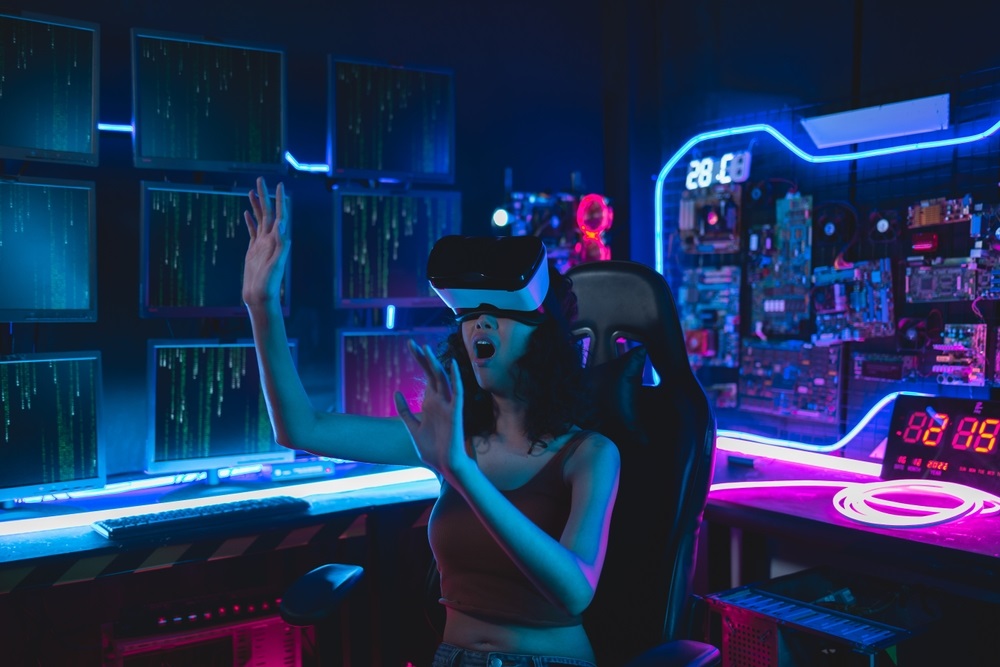How to Integrate a Virtual Learning Environment (VLE)?

In the modern educational landscape, one term has risen to prominence: Virtual Learning Environment (VLE). With the influx of technology into academia, institutions are searching for optimal ways to integrate VLEs.
But how does one achieve a seamless Virtual Learning Environment Integration? Let's explore the steps to create and harness the potential of these digital classrooms.
What is a Virtual Learning Environment?
Before delving into integration, it's essential to understand what a VLE is!
A VLE, or Virtual Learning Environment, serves as the digital heartbeat of many educational institutions.
It provides a centralized online space where teachers can upload course materials, assignments, and other resources while students can access them at their own convenience.
But, a Virtual Learning Environment is much more than just a digital repository of materials.
It's a holistic platform designed to enhance the teaching and learning experience, adapting to the digital shifts and demands of the modern world.
In a VLE, there's room for interaction and collaboration. Students can participate in discussion forums, engage in group projects, take quizzes, and even receive feedback on their performance, all within this virtual space.
Furthermore, it also provides tools for tracking progress, thereby enabling educators to provide timely interventions when necessary.
What's exciting about the world of VLEs is that they're continually evolving. And, the emergence of 3D virtual learning environments, as mentioned, is a testament to this.
These platforms offer learners an even more engaging experience. Imagine stepping into a virtual laboratory where you can conduct experiments or visiting a digital art gallery to study pieces from various artists.
The possibilities are endless, making learning not just informative but also immersive and interactive.
Advantages of Virtual Learning Environment

The advent and expansion of technology in the educational sector have seen the rise of Virtual Learning Environments (VLEs). These platforms provide a multitude of advantages that benefit both educators and learners alike.
Yes, it is not limited to virtual college tours only.
Here is a closer look at how VLE benefits higher education with its unmatchable advantages:
✔️ Flexibility and Accessibility
One of the primary advantages of VLEs is that they allow for learning to occur at any time and from any location.
Students can access materials, participate in discussions, submit assignments, and take assessments from the comfort of their homes or any other location with internet access.
This flexibility is especially beneficial for students who may have work commitments, family obligations, or other circumstances that make traditional classroom attendance challenging.
✔️ Personalized Learning Paths
VLEs can be designed to adapt to individual learners' needs.
Students can progress at their own pace, revisiting materials as needed or skipping over content they've already mastered.
Advanced tracking and analytics allow educators to understand where students might be struggling and offer targeted support.
Additionally, VLEs can integrate a variety of multimedia resources (videos, interactive simulations, podcasts) to cater to different learning styles.
✔️ Cost-Efficiency
Virtual learning can lead to significant cost savings for both educational institutions and students. Institutions can save on physical infrastructure, utilities, and maintenance costs.
On the student side, there's often a reduction in costs associated with transportation, housing, and physical materials.
Moreover, many digital resources and e-textbooks are available at a fraction of the price of traditional textbooks.
✔️ Collaborative and Interactive Learning
VLEs often integrate tools and platforms that facilitate collaboration among students and between students and instructors.
Forums, chat rooms, wikis, and peer-review platforms allow for active engagement, group work, and discussions.
These tools can also break geographical barriers, allowing for international collaboration and exposing students to diverse perspectives and cultures.
While VLEs offer numerous advantages, it's also essential to note that they're most effective when designed thoughtfully and when learners are provided with the necessary support to navigate and use them effectively.
"Experience the future of education with our immersive Virtual Learning Environment. Join us today and unlock boundless opportunities for learning!"
How to create a Virtual Learning Environment?
Creating a Virtual Learning Environment (VLE) is a multifaceted process that involves careful planning, execution, and constant review. Here are some steps to guide you through the process:
✔️ Step 1. Define Your Objectives
Understand this- the objective of VR engineering will be different from VR for medical colleges. So, before diving into the technicalities, have a clear understanding of your objectives for setting up a VLE.
Are you aiming to provide more flexible access to learning resources, facilitate collaborative projects, or something else? Clearly defined objectives will guide the subsequent steps and help you make informed decisions.
✔️ Step 2. Choose the Right Platform
With numerous VLE options available, it's essential to choose a platform that aligns with your needs. Consider aspects like user interface, scalability, integration capabilities, and cost.
Some institutions may prefer traditional platforms like Moodle or Blackboard, while others might explore innovative solutions like 3D virtual classrooms, like those offered by iXR Labs.
✔️ Step 3. Train Educators
An effective VLE is only as good as its facilitators. Invest in training educators, ensuring they're comfortable with the platform, understand its features, and can employ best practices for online teaching.
This can include workshops, hands-on sessions, and continuous professional development opportunities.
✔️ Step 4. Engage Students
Students need to feel at ease with the VLE for it to be effective. Provide orientation sessions, create user-friendly guides, and offer troubleshooting support.
Addressing common concerns, from logging in to navigating the platform, ensures that technical hurdles don't impede learning. This could also include FAQs on VR lab setup or simple tutorials.
✔️ Step 5. Incorporate Interactive Elements
Interactivity is key to engagement in virtual spaces. Incorporate multimedia resources, quizzes, simulations, and collaborative tools.
Think creatively: virtual campus tours for new students or VR-based science experiments can make the learning experience dynamic and memorable.
✔️ Step 6. Monitor and Iterate
Creating a VLE is not a one-time task. Regularly gather feedback from both educators and students. Monitor usage patterns, participation rates, and learning outcomes.
Use this data to identify areas for improvement, and make necessary adjustments. Remember, the virtual learning landscape is evolving, and so should your VLE to remain relevant and effective.
Incorporating these steps will ensure that your VLE is not only technically sound but also pedagogically effective, promoting an enriching learning experience for all involved.
Read More:- How to Setup VR Labs for Universities and Colleges?
The Future of Virtual Learning Environments (VLEs)
The potential of Virtual Learning Environments (VLEs) is vast and, as technology progresses, so does the horizon of possibilities they bring to education.
These platforms, once primarily text-based, are now evolving into rich, multimedia experiences that blur the lines between the real and digital worlds.
✔️ Rise of Augmented and Mixed Reality
In addition to 3D virtual environments, Augmented Reality (AR) and Mixed Reality (MR) are starting to make their mark in educational settings.
These technologies overlay digital information in the real world, offering students a blend of hands-on and virtual learning experiences.
Imagine a history lesson where students can "see" historic events unfold around them or a biology class where complex processes are visualized in 3D right before their eyes.
✔️ Artificial Intelligence and Personalization
The integration of Artificial Intelligence (AI) into VLEs will allow for even greater personalization of the learning experience.
AI can analyze student's interaction with materials, assess their performance in real-time, and tailor content and resources to fit their specific needs and pace.
✔️ Collaborative and Social Learning
The future VLEs will place even greater emphasis on collaborative and social learning. Platforms will incorporate more tools for group projects, peer reviews, and community discussions, facilitating interaction between students from different parts of the world.
This will nurture global perspectives and promote cross-cultural understanding.
✔️ Sustainability and Eco-Friendly Models
With the growing emphasis on sustainability, VLEs offer a greener alternative to traditional learning models.
The reduced need for physical infrastructure, transportation, and printed materials makes virtual learning an eco-friendly solution.
✔️ Life-Long Learning and Skill Development
As the workplace evolves and the need for continuous skill upgradation becomes essential, VLEs will play a crucial role in facilitating lifelong learning.
They'll provide accessible avenues for professionals to update their skills, switch careers, or delve into personal interests.
Conclusion
As technology advances, so must our learning methodologies to effectively captivate today's learners. Now is the prime moment to explore virtual learning environments (VLEs). Yet, always keep one eye on what's next.
Innovations are a constant in this digital age. An adaptable and integrated learning platform ensures seamless assimilation of future tech breakthroughs, letting you grow your training initiatives seamlessly.
Why settle for past education techniques when the future holds so much promise?
Curious about harnessing technology for dynamic Virtual Learning Environments? Reach out to iXR Labs for answers, or schedule a personalized demo.
Discover how our comprehensive learning solutions gear you up for the forthcoming education landscape. Connect with us at namaste@ixrlabs.com.




